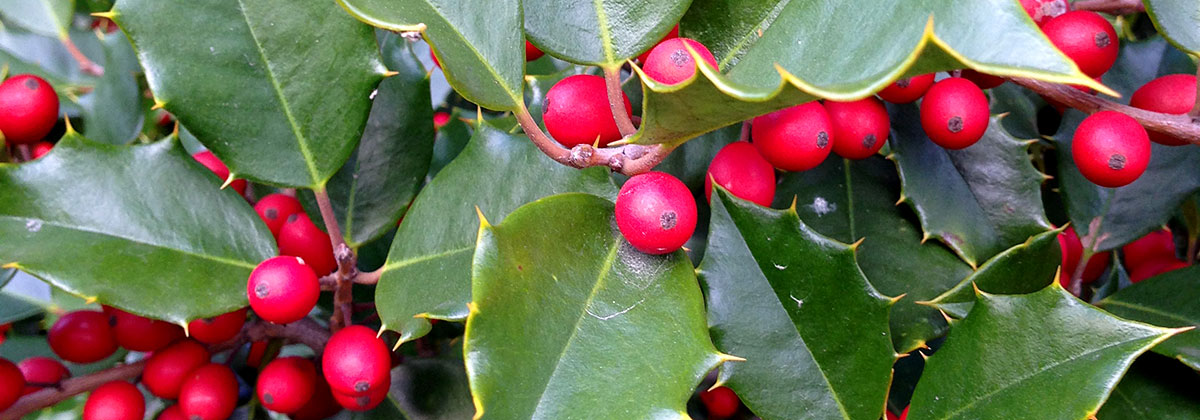
Some of the beautiful, mature hollies that make up the foundation of our collection were planted as early as the late 1930s, through the 40s and 50s, and into the 60s. Although several of the older plants were installed for the purposes of display, most were established as an evaluation of different varieties by the Holly Society of America (HSA). These trees became the core of the breeding programs of Dr. Elwin Orton, who made interesting crosses and developed many noteworthy varieties.
The original intent of the HSA was to cross the American Holly (Ilex opaca) with English Holly (I. aquifolium), in hopes of producing a hardy, glossy-leaved plant with large red fruits that could be used for “cuts” during the Christmas holiday season. Today, much as in the 50s, cuts are shipped from Oregon and Washington State, and the HSA wished to reduce the cost of shipping, while creating more jobs for local farmers. Unfortunately, the crosses proved to be sterile, producing no decorative fruit. In response, Dr. Orton focused his attention specifically on improved forms of the American Hollies, resulting in popular selections such as ‘Dan Fenton’, ‘Jersey Princess’, ‘Jersey Delight’, and ‘Jersey Knight’. These and other noteworthy specimens—such as ‘Cumberland’, ‘Judge Brown’, and ‘Old Heavy Berry’—together with the original planting of Ilex opaca, contribute to what is one of the largest collections of American Hollies in the United States.
In addition to the American Hollies, our collection includes a wide range of other Ilex species, such as Madeira Holly (I. perado), English Holly (I. aquifolium), Japanese Holly (I. crenata), Chinese Holly (I. cornuta), and Inkberry Holly (I. glabra). You will also find hybrid varieties of Aquipern Holly (I. × aquipernyi), Altaclara Holly (I. × altaclarensis), Meserve Holly (I. × meserveae), and Koehn Holly (I. × koehneana). A variety of other inter-specific hybrids such as ‘Jersey Jewel’, ‘Jersey Girl’, and ‘Nellie R. Stevens’ are represented, as well as various unique hybrids from the breeding program not found anywhere else. And if this impressive assortment of evergreens isn’t enough, our collection also includes over 70 deciduous holly trees, including Winterberry Holly (I. verticillata), Japanese Winterberry Holly (I. serrata), Deciduous Holly (I. decidua), and many deciduous hybrid crosses.
As you enter the Rutgers Gardens, adjacent to the American Hollies (map area #1), you will find a historic blue building now known as Holly House. One of the original structures at “Horticultural Farm No. 1,” it was built in the early 1930s by the Civilian Conservation Corps (CCC), a public work relief program during the Great Depression. Its original purpose, with its two large walk-in refrigerators in the basement, was for storage and sorting of research materials. Holly House was renovated in the 80s, and it now acts as the headquarters for the Garden Club of New Jersey and as the site for a number of continuing education classes.
We hope that you will come to visit and enjoy our vast collection of hollies. For a list of all of our accessions in the Holly Collection and for maps of all the major holly plantings throughout the garden, please click on the links to download the PDF files of the accessions and the maps.


